Release Notes for v0.8.2
2020-07-29Files Changed
71 files changed, 1170 insertions(+), 977 deletions(-)
...
How bad is panic (performancewise)?
I asked this question on the Rust Users Forum and as a result I introduced four new enums (using the strum crate):
use strum::IntoEnumIterator;
use strum_macros::EnumIter;
// src/core/geometry.rs
#[derive(EnumIter, Debug, Copy, Clone)]
#[repr(u8)]
pub enum XYEnum {
X = 0,
Y = 1,
}
#[derive(EnumIter, Debug, Copy, Clone)]
#[repr(u8)]
pub enum MinMaxEnum {
Min = 0,
Max = 1,
}
#[derive(EnumIter, Debug, Copy, Clone)]
#[repr(u8)]
pub enum XYZEnum {
X = 0,
Y = 1,
Z = 2,
}
// src/core/spectrum.rs
#[derive(EnumIter, Debug, Copy, Clone)]
#[repr(u8)]
pub enum RGBEnum {
Red = 0,
Green = 1,
Blue = 2,
}
To iterate over the variants of an Enum, you do use the
strum crate. The old loop might have
looked like this:
for axis in 0..3_usize {
for ch in 0..3_usize {
pdf += self.pdf_sr(ch, r_proj[axis])
* n_local[axis as u8].abs()
* ch_prob
* axis_prob[axis];
}
}
Which gets replaced by:
use strum::IntoEnumIterator;
...
for axis in XYZEnum::iter() {
for ch in RGBEnum::iter() {
pdf += self.pdf_sr(ch, r_proj[axis as usize])
* n_local[axis].abs()
* ch_prob
* axis_prob[axis as usize];
}
}
Issues
There was only one issue
resolved for this release, which introduced a naming convention
(for parse_blend_file.rs) like this:
If the instances (objects with transformation info) are called object_name1, object_name2, etc., the shared mesh should be called object_name, and the material (shared for all objects) should be called object_name1 (notice the trailing one).
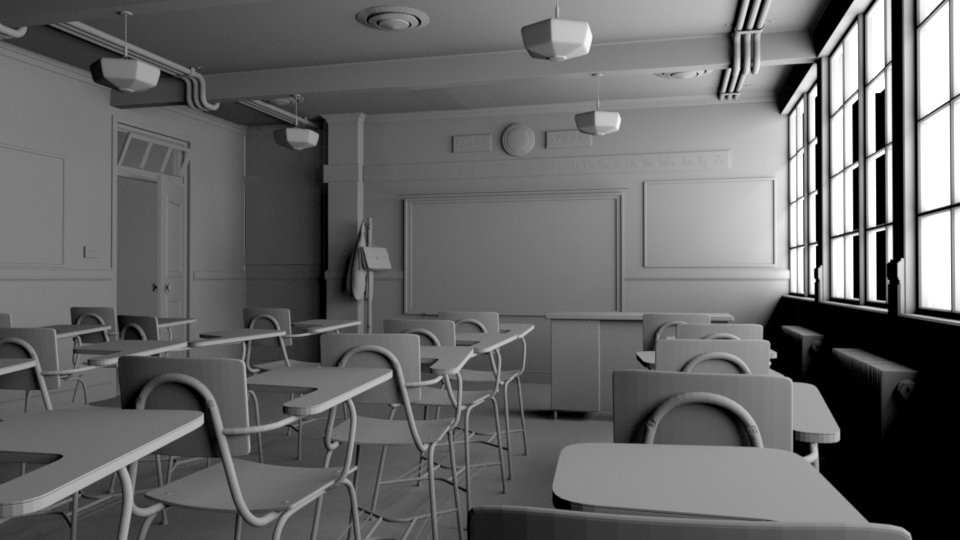
This is not using instances on the rendering side, it just allows
.blend files to share the same mesh geometry for several
objects, which place the same geometry several times within the
scene.
Performance
MediumInterface
Commit
14aa1bc27b9e38a7dc6d905450d335f5679043e7
avoids allocating MediumInterface in a loop. The result can be seen
via heaptrack:
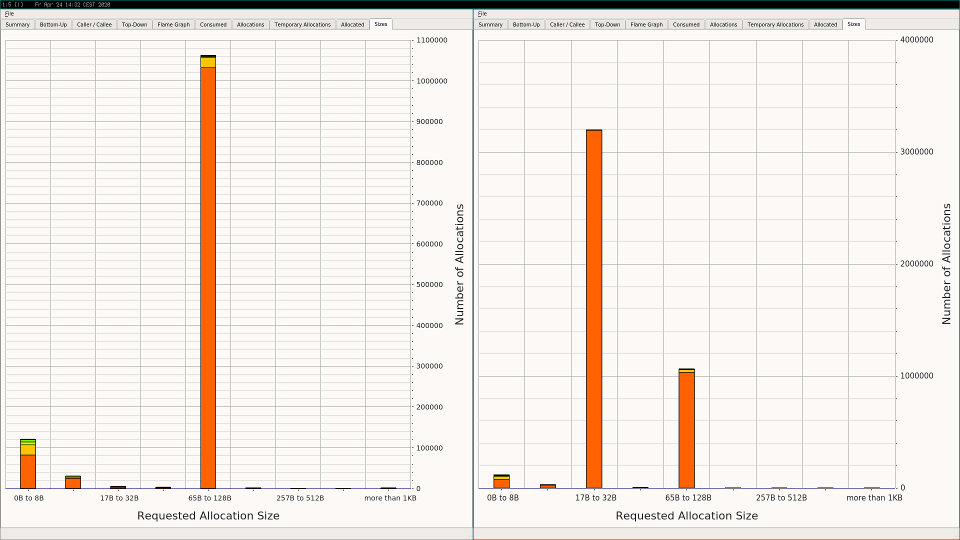
The third column on the right side is reduced a lot. All other columns just scale ...
RwLock
Commit
c4858d139fa7da364f48f46854b631ebd4516300
(and the previous commit) replace RwLock and the diagrams using
perf show this:

@@ -54,8 +57,9 @@ pub struct HaltonSampler {
pub base_exponents: Point2i,
pub sample_stride: u64,
pub mult_inverse: [i64; 2],
- pub pixel_for_offset: RwLock<Point2i>,
- pub offset_for_current_pixel: RwLock<u64>,
+ pub pixel_for_offset_x: AtomicI32,
+ pub pixel_for_offset_y: AtomicI32,
+ pub offset_for_current_pixel: AtomicU64,
pub sample_at_pixel_center: bool, // default: false
// inherited from class GlobalSampler (see sampler.h)
pub dimension: i64,
Here is another
commit
which replaces a RwLock by an AtomSetOnce:
@@ -37,10 +38,10 @@ impl LightDistribution {
}
}
-#[derive(Debug, Default)]
+#[derive(Debug)]
struct HashEntry {
packed_pos: Atomic<u64>,
- distribution: RwLock<Option<Arc<Distribution1D>>>,
+ distribution: AtomSetOnce<Arc<Distribution1D>>,
}
/// The simplest possible implementation of LightDistribution: this
This commit removes memory allocations due to RwLock:
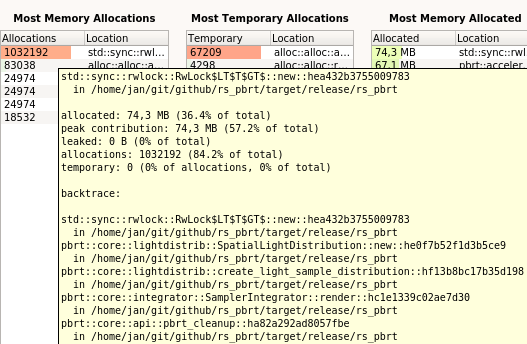
On the right you see that the fifth column was pretty high:
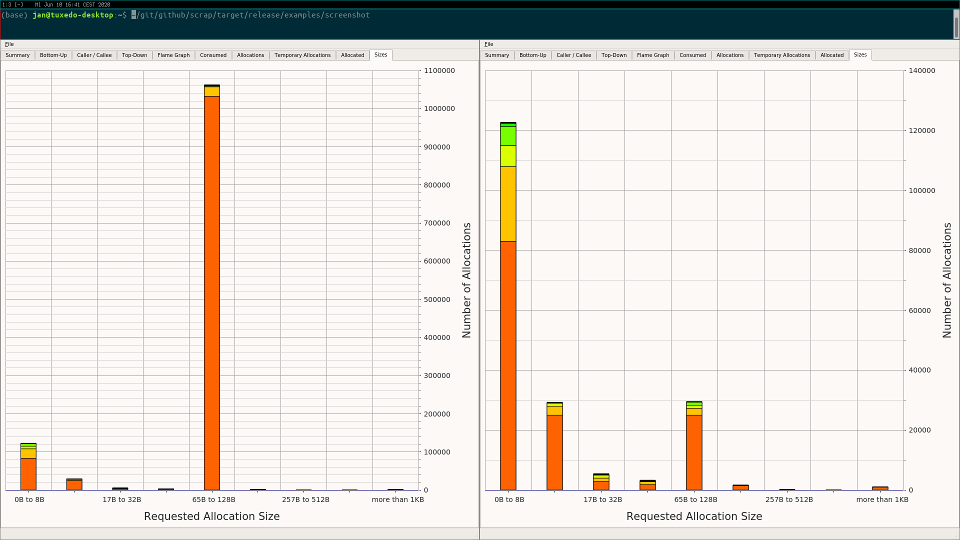
Most of the allocations in that row were there because the threads
were using RwLock in the SpatialLightDistribution for the hash
entries.
Avoid returning a Vec
In fn uniform_sample_all_lights(...) you ask the sampler to return
two Vec<Point2f>, one for the u_light_array, one for the
u_scattering_array:
@@ -316,9 +315,11 @@ pub fn uniform_sample_all_lights(
for (j, n_samples) in n_light_samples.iter().enumerate().take(scene.lights.len()) {
// accumulate contribution of _j_th light to _L_
let light = &scene.lights[j];
- let u_light_array: Vec<Point2f> = sampler.get_2d_array_vec(*n_samples);
- let u_scattering_array: Vec<Point2f> = sampler.get_2d_array_vec(*n_samples);
- if u_light_array.is_empty() || u_scattering_array.is_empty() {
+ let (u_light_array_is_empty, u_light_array_idx, u_light_array_start) =
+ sampler.get_2d_array_idxs(*n_samples);
+ let (u_scattering_array_is_empty, u_scattering_array_idx, u_scattering_array_start) =
+ sampler.get_2d_array_idxs(*n_samples);
+ if u_light_array_is_empty || u_scattering_array_is_empty {
// use a single sample for illumination from _light_
let u_light: Point2f = sampler.get_2d();
let u_scattering: Point2f = sampler.get_2d();
@@ -336,11 +337,17 @@ pub fn uniform_sample_all_lights(
// estimate direct lighting using sample arrays
let mut ld: Spectrum = Spectrum::new(0.0);
for k in 0..*n_samples {
+ let u_scattering_array_sample: Point2f = sampler.get_2d_sample(
+ u_scattering_array_idx,
+ u_scattering_array_start + k as usize,
+ );
+ let u_light_array_sample: Point2f =
+ sampler.get_2d_sample(u_light_array_idx, u_light_array_start + k as usize);
ld += estimate_direct(
it,
- u_scattering_array[k as usize],
+ u_scattering_array_sample,
light.clone(),
- u_light_array[k as usize],
+ u_light_array_sample,
scene,
sampler,
handle_media,
I tried several things to avoid copying parts of a Vec, for example
by changing the signature from:
pub fn get_2d_array_vec(&mut self, n: i32) -> Vec<Point2f>
to returning a reference to a slice (and avoiding &mut on self):
pub fn get_2d_array_vec(&self, n: i32) -> &[Point2f]
but in the end that turned out to be complicated to be archieved for
all samplers (I tried this successfully for the HaltonSampler).
I figured out that we need a function like this:
pub fn get_2d_array_idxs(&mut self, n: i32) -> (bool, usize, usize)
The bool values is used to decide:
if u_light_array_is_empty || u_scattering_array_is_empty {
// use a single sample for illumination from _light_
...
} else {
// estimate direct lighting using sample arrays
...
}
The else branch will look like this and call sampler.get_2d_sample(...):
// estimate direct lighting using sample arrays
let mut ld: Spectrum = Spectrum::new(0.0);
for k in 0..*n_samples {
let u_scattering_array_sample: Point2f = sampler.get_2d_sample(
u_scattering_array_idx,
u_scattering_array_start + k as usize,
);
let u_light_array_sample: Point2f =
sampler.get_2d_sample(u_light_array_idx,
u_light_array_start + k as usize);
ld += estimate_direct(
it,
u_scattering_array_sample,
light.clone(),
u_light_array_sample,
scene,
sampler,
handle_media,
false,
);
}
l += ld / *n_samples as Float;
So, all we needed was an index (array_idx) to choose a precalculated
array, and another index (idx) to choose an element (Point2f).
pub fn get_2d_sample(&self, array_idx: usize, idx: usize) -> Point2f {
self.sample_array_2d[array_idx][idx]
}
This had to be done for a couple of elements, but they were all basically in one slice.
The commit in question was measured on a test scene and reduced the allocations from about 30 million (lower graph) to about 100 thousand (upper graph):
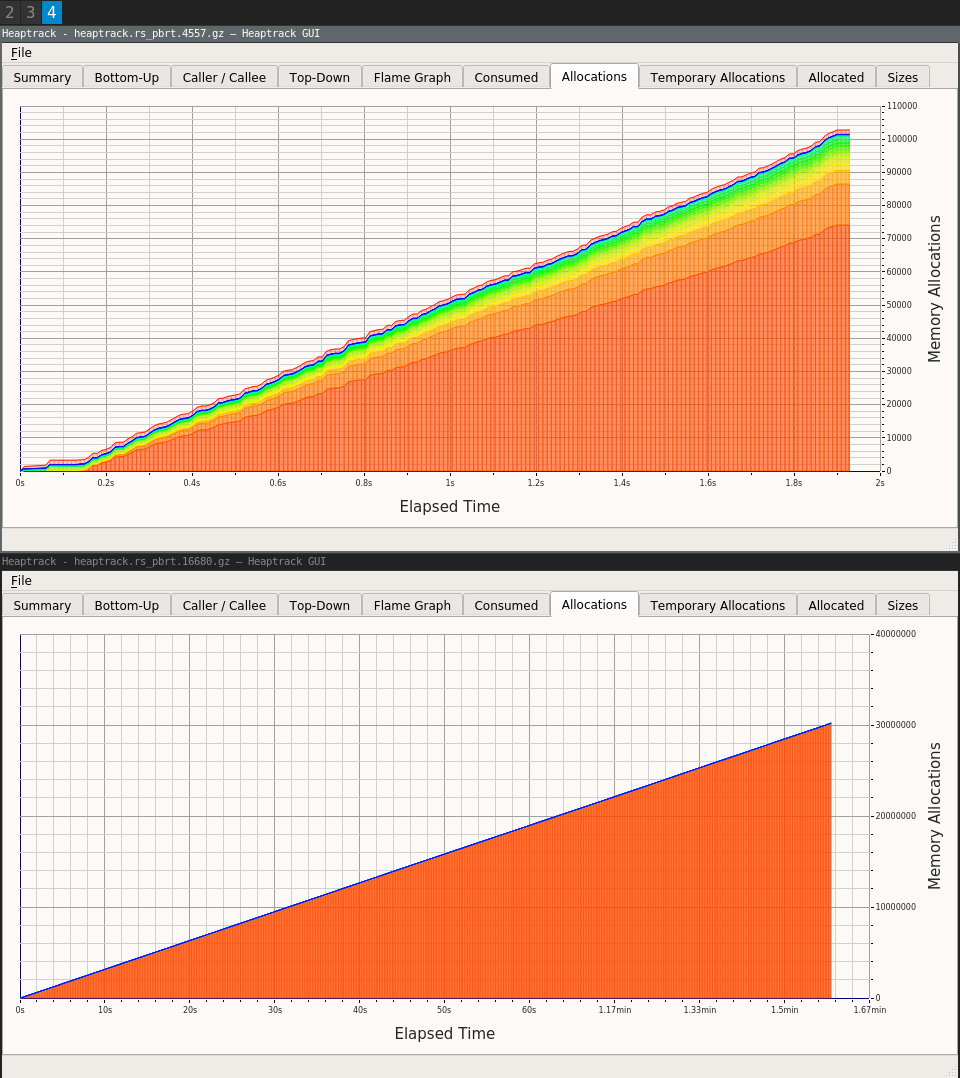
The End
I hope I didn't forget anything important. Have fun and enjoy the v0.8.2 release.